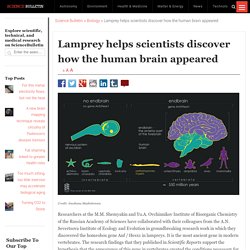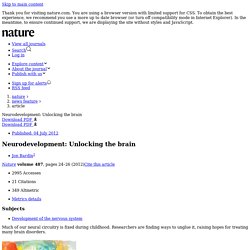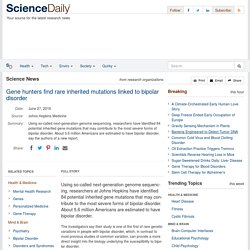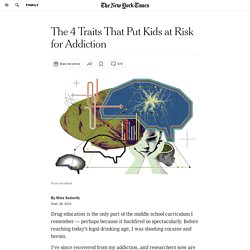

Aging Well: Surprising Guideposts to a Happier Life From the Landmark Harvard Study of Adult Development. Nature vs. Nurture Debate: 50-Year Twin Study Proves It Takes Two To Determine Human Traits. A culmination of more than half a century of research collected on 14.5 million pairs of twins has finally concluded that the nature versus nurture debate is a draw.

According to the plethora of data, both have nearly identical influences on a person’s behavior, which suggests we need to stop looking at ourselves as a result of nature versus nurture, and instead realize we are a combination of both. The recent study, published in the journal Nature Genetics, is the result of the collaboration between Dr. Beben Benyamin from the Queensland Brain Institute and researchers at the VU University of Amsterdam. They reviewed nearly every twin study ever done in the past 50 years. The impressive global twin review revealed that, on average, the variation for human traits and diseases is split almost equally.
Scientists Grow Bigger Monkey Brains Using Human Genes, Replicating Evolution. It's our larger brains that set us apart from other primates.

Back when we evolved from non-human primates, one specific gene came into play, which made our brains bigger while theirs stayed smaller. Now a collaboration between researchers in Germany at the Max Planck Institute of Molecular Cell Biology and Genetics and in Japan at the Central Institute for Experimental Animals, has used that same gene to grow a monkey brain to be bigger for the first time.
Their study was published in Science on Thursday. This study is not only incredible, it's also enlightening. Untitled. Untitled. Sex cells evolved to pass on quality mitochondria. Lamprey helps scientists discover how the human brain appeared. Credit: Snezhana Mazhekenova Researchers at the M.M.

Without ancestral gene life on Earth might not have evolved beyond slime. Researchers at the University of British Columbia have identified a common ancestral gene that enabled the evolution of advanced life over a billion years ago.

The gene, found in all complex organisms, including plants and animals, encodes for a large group of enzymes known as protein kinases that enabled cells to be larger and to rapidly transfer information from one part to another. "If the duplications and subsequent mutations of this gene during evolution didn't happen, then life would be completely different today," said Steven Pelech, a professor in Division of Neurology in the UBC Faculty of Medicine. "The most advanced life on our planet would probably still be bacterial slime. " Plants, animals, mushrooms and more all exist because they are made up of eukaryotic cells that are larger and far more complex than bacteria. Regulating Critical Period Plasticity: Insight from the Visual System to Fear Circuitry for Therapeutic Interventions. Neurodevelopment: Unlocking the brain. Growing up in the suburbs of New York City, Takao Hensch learned German from his father, Japanese from his mother and English from the community around him.

“I was always wondering,” he says, “what is it that makes it so easy to learn languages when you're young, and so hard once you begin to get older?” Today, as a neuroscientist at Boston Children's Hospital in Massachusetts, Hensch is at the forefront of efforts to answer that question in full molecular detail. Language acquisition is just one of many processes that go through a 'sensitive' or 'critical' period — an interval during development when the neural circuits responsible for that process can be sculpted, and radically changed, by experience (see 'Open and shut').
During critical periods, children can make rapid progress at discerning facial features that look like their own, recognizing spoken language and locating objects in space. Genetic and environmental influences on human psychological differences - Bouchard - 2002 - Journal of Neurobiology.
Genetics. Gene hunters find rare inherited mutations linked to bipolar disorder. Using so-called next-generation genome sequencing, researchers at Johns Hopkins have identified 84 potential inherited gene mutations that may contribute to the most severe forms of bipolar disorder.

About 5.6 million Americans are estimated to have bipolar disorder. The investigators say their study is one of the first of rare genetic variations in people with bipolar disorder, which, in contrast to most previous studies of common variation, can provide a more direct insight into the biology underlying the susceptibility to bipolar disorder. Scientists link bipolar disorder to unexpected brain region. While bipolar disorder is one of the most-studied neurological disorders--the Greeks noticed symptoms of the disease as early as the first century--it's possible that scientists have overlooked an important part of the brain for its source.

Scientists from the Florida campus of The Scripps Research Institute (TSRI) have shown for the first time that ensembles of genes within the striatum--a part of the brain that coordinates many primary aspects of our behavior, such as motor and action planning, motivation and reward perception--could be deeply involved in the disorder. Most modern studies of bipolar disorder have concentrated on the brain's cortex, the largest part of the brain in humans, associated with higher-level thought and action. Developmental trajectories during adolescence in males and femal. Developmental trajectories during adolescence in males and females: a cross-species understanding of underlying brain changes.
Girl With Half Her Brain Becomes Speech Pathologist as Adult (Video) An 8-year-old girl who had the right side of her brain removed in a life-saving surgery has grown up to earn a Master’s degree and become a speech pathologist.

Christina Santhouse was suffering from Rasmussen’s encephalitis — an extremely rare autoimmune disorder that caused 150 seizures every day. With the condition worsening, doctors agreed the only way to save her life was to remove the right half of her brain. FIND MORE INSPIRING STORIES WITH OUR GOOD NEWS APP—> Download FREE for Android and iOS As she was wheeled into the operating room, Christina was upbeat and excited about getting her life back after having experiencing so many seizures. Dr. Test predicts which children will grow up to be drain on society - when they are just three years old The 4 Traits That Put Kids at Risk for Addiction.
Photo Drug education is the only part of the middle school curriculum I remember — perhaps because it backfired so spectacularly.

Before reaching today’s legal drinking age, I was shooting cocaine and heroin. I’ve since recovered from my addiction, and researchers now are trying to develop innovative prevention programs to help children at risk take a different road than I did. Developing a public antidrug program that really works has not been easy. Many of us grew up with antidrug programs like D.A.R.E. or the Nancy Reagan-inspired antidrug campaign “Just Say No.”